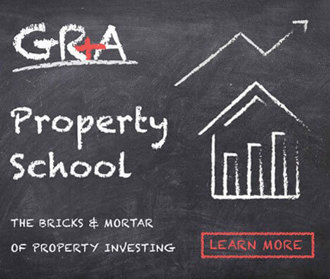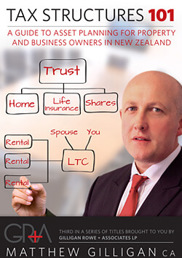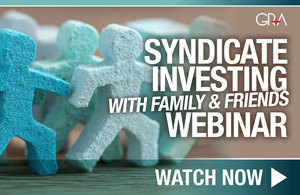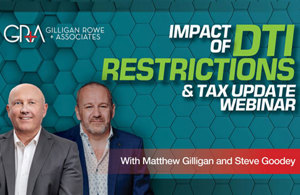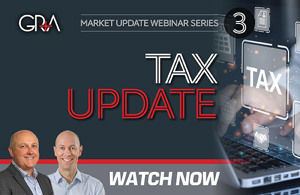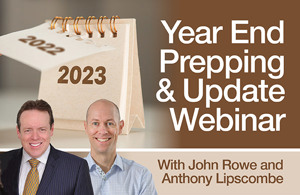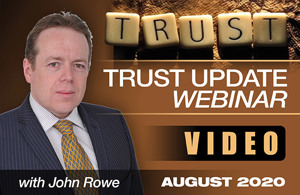
• Ring-fencing will apply to tax losses produced from the 2019 / 2020 income year. Most taxpayers will have a balance date of 31 March, which means it applies from 1 April 2019.
• Tax losses that have accumulated prior to this date are not ring-fenced.
• Ring-fencing comes in “full force” from this date, i.e. it is not going to be eased in over a period of two to three years (let alone the five years that Labour indicated would likely be the case prior to the election).
• Tax losses produced by “residential rental property” are to be ring-fenced. Drilling down on “residential rental property”, this is land with a dwelling on it that is occupied residentially, or bare land that could have a residential dwelling built on it. Serviced apartments are specifically included as residential rental property.
• Specifically excluded from this definition are the main home, farmland, business premises, commercial property and any residential land that has been bought as part of a business of property dealing, development or erecting buildings. Also excluded is any “mixed-use” property. A typical mixed-use property is a holiday rental that is used in part to produce income and in part used privately. This is because such an asset is subject to specific ring-fencing rules under the mixed-use asset rules already.
• The substance of the ring-fencing means that any surplus of expense over income that would otherwise produce a taxable loss is set aside and carried forward to the next income year and is only available for offset against rental income from residential rental property or taxable gains on the sale of residential rental property. Such losses cannot be offset against salary or business income, for example.
• The ring-fencing rules can either apply on a portfolio basis (meaning that losses of one property can be offset against the profits of another) or on a property-by-property basis (meaning that losses of a particular property can only be offset against future profits in relation to the same property).
• When you sell a rental property that has been subject to a property-by-property election, or on sale of the last property in a portfolio, there is a mechanism for any ring-fenced loss to then be released on the condition that the sale of the residential rental properties that produced the ring-fenced loss have resulted in taxable income.
• There are avoidance mechanisms to prevent cunning taxpayers from gearing the shares in companies that own residential rental properties. Put broadly, if more than half of the assets of a company comprise residential rental property, then interest on borrowing to acquire the shares in that company is subject to the same ring-fencing provisions.
Now to some of the questions that are arising.
CASE STUDY 1:
An individual personally owns one tax positive residential rental property and one tax negative residential rental property. Can the rental profits of one property be offset against the losses of the other?
Yes. Under the draft rules, a taxpayer who owns two residential rental properties can by default offset the profits of one against the losses of the other. As a matter of detail, it is worth noting that offsetting profits and losses of multiple rental properties held by the same owner requires you to be applying the so-called “portfolio” method of loss calculation. The draft legislation also permits election to use a “property-by-property” basis. If one elected to use a property-by-property basis when accounting for losses, they would be precluded from offsetting the losses of one property against profits of another.
CASE STUDY 2:
What if the rentals are not held by the same entity? For example, take an investor who owns two LTCs. For the purpose of this example we will say that the shares in the LTCs are either held by the same person or persons or by the same trust. If one LTC owns a property that is making a tax loss and the other owns a property that is making a tax profit, can the profits and losses be offset?
Based on the draft rules we believe that it will be possible to do so. Once again this assumes that you have not elected to offset losses on a property-by-property basis. Despite the fact that the properties are owned by two different legal entities, for income tax purposes the assets of an LTC are deemed to be held by the shareholders. Thus the shareholders of the two LTCs would be deemed to hold the properties for tax purposes, thus allowing offsets.
CASE STUDY 3:
What about if the companies in question were not LTCs and instead were “ordinary” companies? Let us imagine a trust that owns 100% of the shares in two companies. One company holds residential rental properties that are profitable and one holds loss-making properties. Can the losses of one ordinary company be offset against the profits of another?
The draft rules contemplate the grouping of losses and would therefore allow residential rental losses of one ordinary company to be offset against residential rental profits of another, but only if the two companies are wholly owned. This means they need to have identical shareholding.
CASE STUDY 4:
What about if a trust is part of the picture? For example, if an individual has a loss-making rental held in an LTC with the losses being attributed to them personally, can those losses be offset against income distributed from a trust that owns a tax positive rental property?
Although the draft legislation does not specifically address this sort of split ownership, it appears that you are not allowed to offset personal losses against taxable rental income allocated to you by a trust.
These are just a few of the scenarios that can arise. There will be many more permutations and at the moment the draft legislation is still far from the finished product. We encourage all readers to keep an eye on developments and seek advice. While the rules are yet to be finalised, one can be certain that ring-fencing of tax losses is coming and there are some actions that investors could be taking prior to the implementation in order to get the best possible outcome when this new environment kicks in. If you would like some advice around this, please contact us at GRA on 09 522 7955, [email protected] or by filling in our online form.
Rules socially regressive
One thing, however, is clear – the loss ring-fencing rules are socially inequitable.
The investors supplying property are being ambushed with a change of rules that is retrospective, when it should be prospective. In my opinion, the rules should only apply to property purchased after the date the legislation is implemented, but this is not the case – they apply to all property, no matter when it was purchased.As I said in my December article, when interest rates rise, lower income investors will be served as insolvent dishes to higher net worth investors, which is contrary to Labour's social agenda.
Additionally, this legislation gives existing investors who are tax positive a huge advantage over new investors. This is because on a portfolio basis, existing investors with taxable income from property can offset that income against losses on new investments. In other words, accessing losses is the domain of a narrow class of investor with existing wealth sufficient to generate taxable surpluses. Therefore, the established investors, the majority of whom are tax positive in the current low interest environment, have an advantage over new investors who have no qualifying income to offset losses with.
Upcoming loss ring-fencing webinar
GRA will be holding a webinar on loss ring-fencing once the rules are finalised – to be informed of such events, keep an eye on our events page or subscribe to our newsletter. You can also see recordings of our webinars on our seminar downloads page.

Matthew Gilligan
Managing Director and Property Services Partner
Did you like this article? Subscribe to our newsletter to receive tips, updates and useful information to help you protect your assets and grow your net worth. We're expert accountants providing expert advice to clients in NZ and around the world.
Disclaimer: This article is intended to provide only a summary of the issues associated with the topics covered. It does not purport to be comprehensive nor to provide specific advice. No person should act in reliance on any statement contained within this article without first obtaining specific professional advice. If you require any further information or advice on any matter covered within this article, please contact the author.
Comments
Testimonials
When we started with GRA we werent certain of the benefits they could provide us. However they quickly unravelled our complex situations with multiple companies and structured our businesses so that we received maximum personal protection and minimised our tax liabilities. They have always been accurate on time thorough and available to answer our questions. Now six years after first moving to the team at GRA they have skilfully guided us to a future that looks amazing. It is with confidence we make decisions knowing our interests are protected by an outstanding group of modern forward thinking professionals. Their guidance has been invaluable and we can thoroughly recommend GRA - Dougall Love and Janice Knowles - June 2017
Property 101by Matthew Gilligan
Investing in residential property?
Put this at the top of your reading list.
If you're investing in residential property, seeking to maximise your ability to succeed and minimise risk, then this is a 'must read'.
Matthew Gilligan provides a fresh look at residential property investment from an experienced investor’s viewpoint. Written in easy to understand language and including many case studies, Matthew explains the ins and outs of successful property investment.
- How to find the right property
- How to negotiate successfully
- Renovation do's & don'ts
- Property management
- Case studies and examples
- and much, much more...



